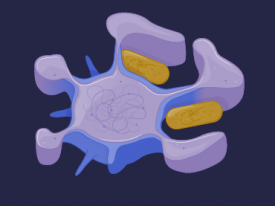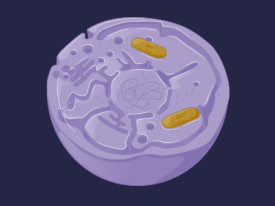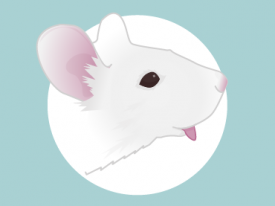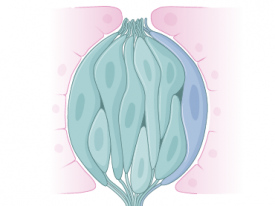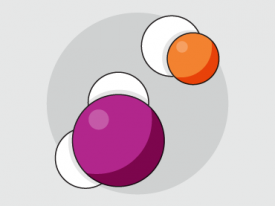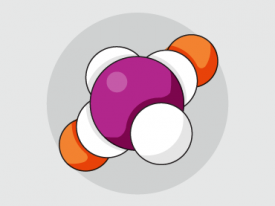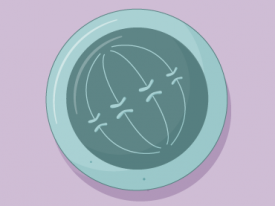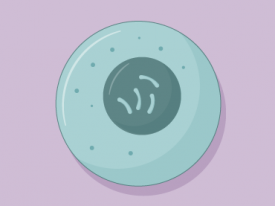Autism and mirror neurons
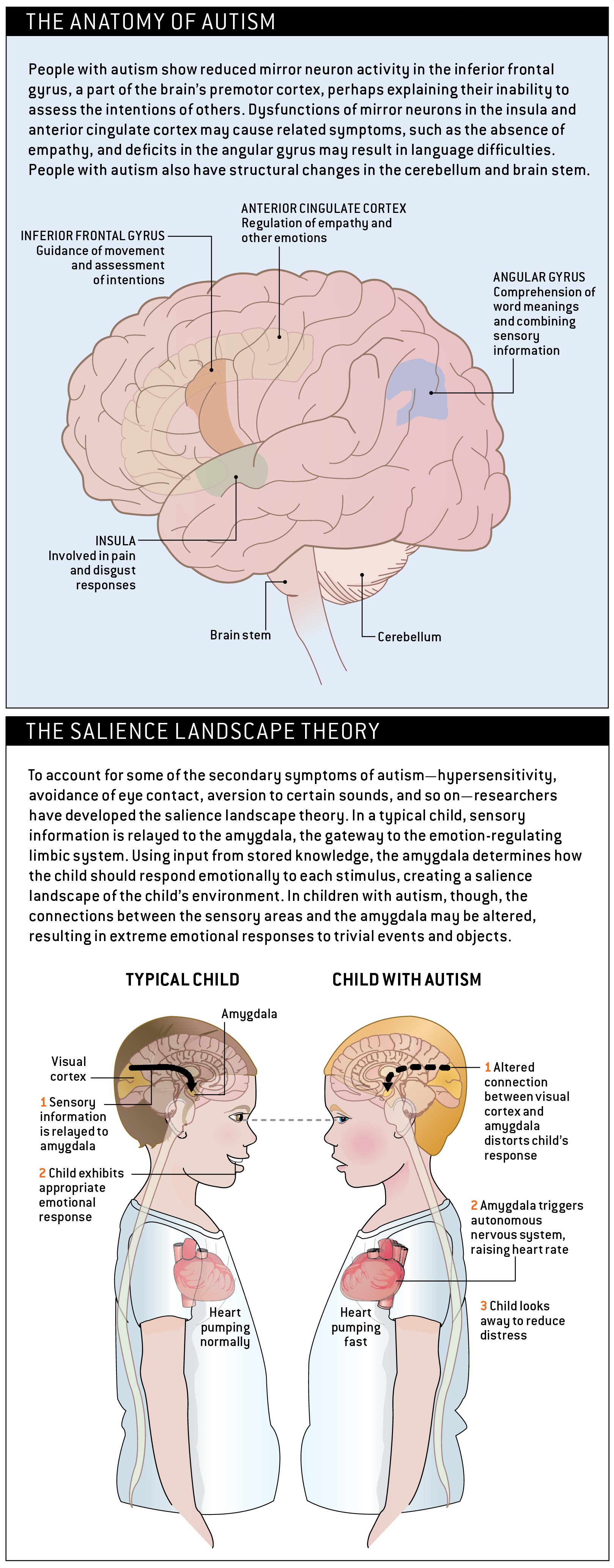 Studies of the mirror neuron system may reveal clues to the causes of autism and help researchers develop new ways to diagnose and treat the disorder.
Studies of the mirror neuron system may reveal clues to the causes of autism and help researchers develop new ways to diagnose and treat the disorder.
People with autism show reduced mirror neuron activity in the inferior frontal gyrus, a part of the brain’s premotor cortex, perhaps explaining their inability to assess the intentions of others. Dysfunctions of mirror neurons in the insula and anterior cingulate cortex may cause related symptoms, such as the absence of empathy, and deficits in the angular gyrus may result in language difficulties. People with autism also have structural changes in the cerebellum and brain stem.
To account for some of the secondary symptoms of autism—hypersensitivity, avoidance of eye contact, aversion to certain sounds, and so on—researchers have developed the salience landscape theory. In a typical child, sensory information is relayed to the amygdala, the gateway to the emotion-regulating limbic system. Using input from stored knowledge, the amygdala determines how the child should respond emotionally to each stimulus, creating a salience landscape of the child’s environment. In children with autism, though, the connections between the sensory areas and the amygdala may be altered, resulting in extreme emotional responses to trivial events and objects. Read the full article here: Mirror Neurons: A Theory of Autism.
Project: Illustration.
Client: Scientific American

